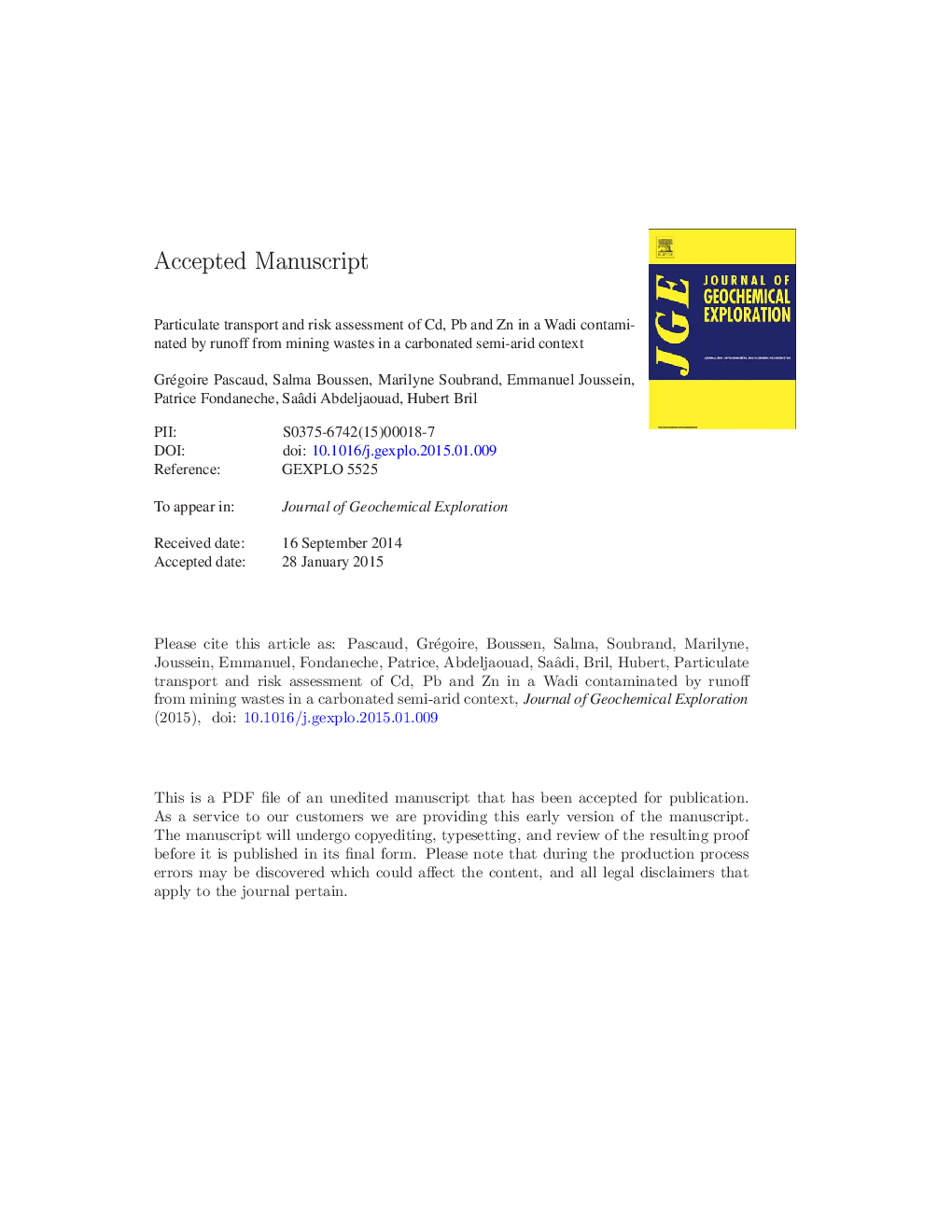| Article ID | Journal | Published Year | Pages | File Type |
|---|---|---|---|---|
| 6344613 | Journal of Geochemical Exploration | 2015 | 40 Pages |
Abstract
The persistent presence of metal elements (ME) in the environment may cause health issues, particularly in a semi-arid climate where annual rainfall (in the range of 650 mm per year) is concentrated into just a few months. This climatic situation has exacerbated the spreading of pollution by means of hydric transport. The corresponding risk assessment depends on: 1) the type of pollutants (mainly their toxicity), 2) their potential mobility, and 3) and the category of receiving organisms. The scientific goals of this investigation involve: determining metal dissemination processes in a semi-arid carbonated context, integrating the Wadi sediment enrichment, and assessing the associated risks induced. This study focuses on the Jalta Pb-Zn mine, which is responsible for the presence of several contaminants, such as Cd. The representative Pb-Zn rich tailings identified (approx. 200 million tons) are drained by the Ghezini Wadi, which winds through the agricultural areas of northern Tunisia and flows into a wetland classified as a UNESCO heritage site. A geochemical study of Ghezini Wadi sediment reveals differences in the level of enrichment, as a function of both its constituents and distance from the mine. The mineralogical characterization of tailings and sediments allows identifying the Pb and Zn bearing phases, which are mainly sulfides, carbonates and iron oxyhydroxides. In terms of environmental and ecological risks, Zn and Pb are enriched in sediments above the background level near the tailings site (within 2.5 km), although Cd-enriched sediments can also be found at distances further towards the lake.
Keywords
Related Topics
Physical Sciences and Engineering
Earth and Planetary Sciences
Economic Geology
Authors
Grégoire Pascaud, Salma Boussen, Marilyne Soubrand, Emmanuel Joussein, Patrice Fondaneche, Saâdi Abdeljaouad, Hubert Bril,
